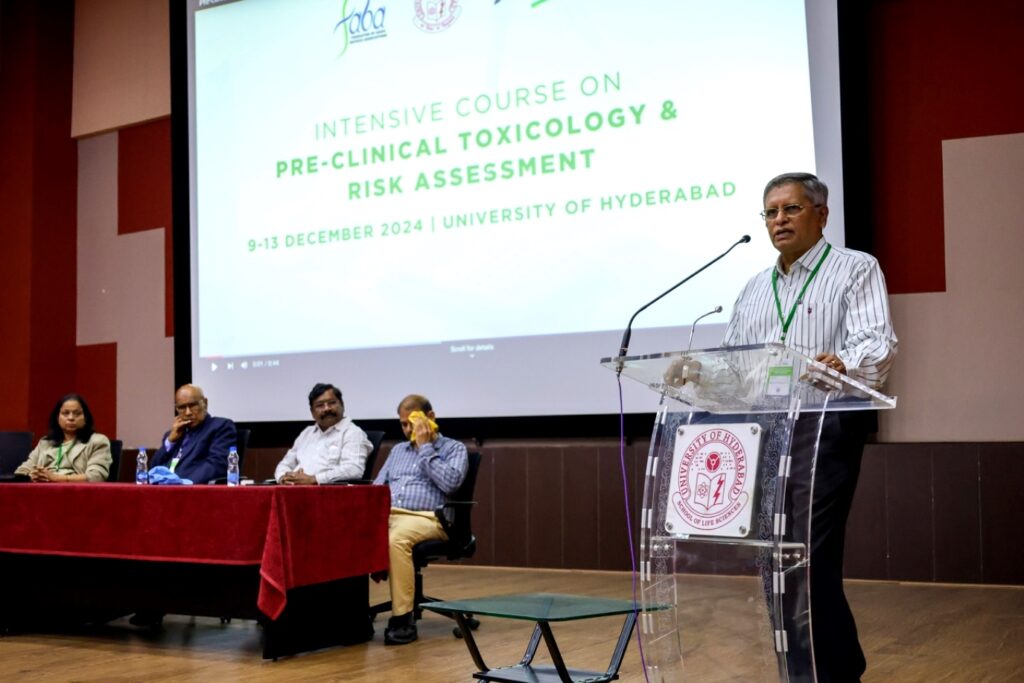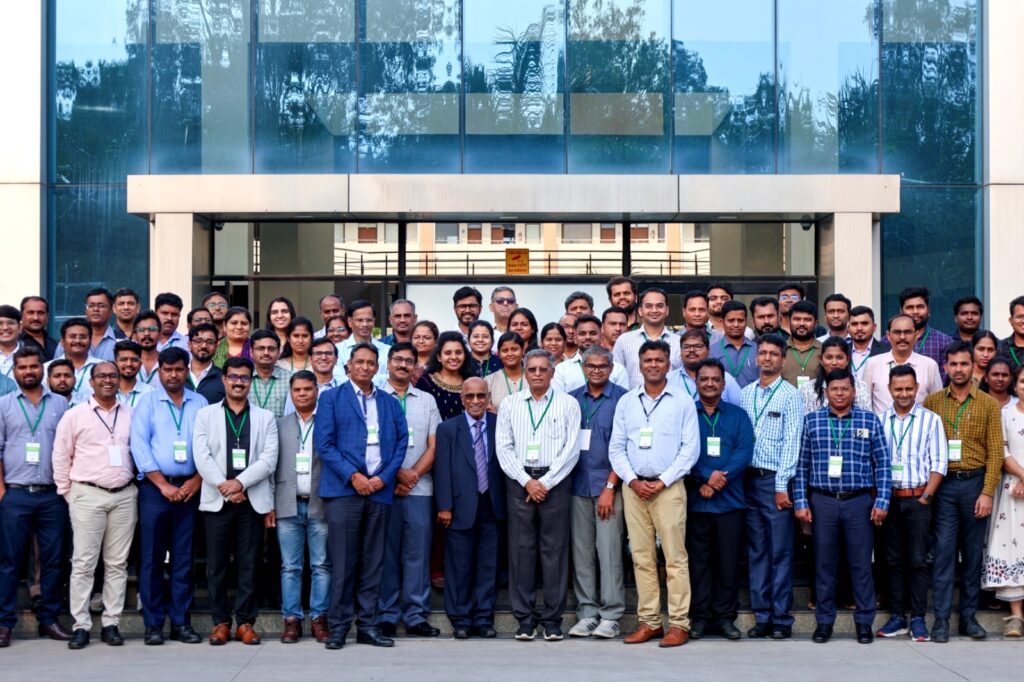India’s Biotechnology Sector Boosted by Landmark Course on Pre-Clinical Toxicology and Risk Assessment
Andhra Pradesh / Hydrabad : The five-day intensive course on Pre-Clinical Toxicology and Risk Assessment at the School of Life Sciences, University of Hyderabad, marked a pivotal advancement in specialized scientific training in India. With its robust curriculum and groundbreaking collaboration among academia, industry, and research institutions, the course has set a new benchmark for professional development in toxicology and risk assessment.
The course was inaugurated by Dr. Taru Sharma, Director of NIAB, in the presence of Prof. Prakash Babu, Dean of the School of Life Sciences, and Prof. Anil Kumar, Head of the Department of Animal Biology, who collectively set the framework for the week-long intensive program. Prof. Pallu Reddanna, Executive President of FABA, opened the proceedings with motivating remarks that resonated with the audience. The program concluded with Dr. Mukesh Kumar Gupta, Director of NARFBR, emphasizing the critical importance of rigorous toxicology studies in enhancing India’s biomedical research capabilities. This series of events provided a robust platform for sharing knowledge and strategies among India’s foremost experts in toxicology.

A Collaborative Endeavor
Jointly organized by the Federation of Asian Biotech Associations (FABA), ASPIRE, and the University of Hyderabad, the program brought together a distinguished cohort of experts from a wide array of toxicology disciplines. Participants delved into diverse topics spanning pharmaceutical safety, pesticide toxicology, medical devices, and cosmetic testing: fields crucial to India’s burgeoning biotechnology and pharmaceutical industries.
The course drew strength from its exceptional lineup of speakers. Dr. K.S. Rao, a global authority with over five decades of experience in safety evaluation, joined industry leaders like Dr. Upendra Bhatnagar of Vimta Labs and Dr. Venkatesha Udupa of Ichnos Glenmark Innovation. Esteemed professionals from Johnson & Johnson, Syngene International, Bayer, and Philips further enriched the program, offering insights from their respective fields. The inclusion of board-certified toxicologists and regulatory specialists added significant depth to the learning experience.
A Comprehensive Learning Journey
Thoughtfully designed, the course began with foundational principles before advancing into specialized domains such as genetic, immunological, and reproductive toxicology. A highlight of the program was the hands-on exposure gained through site visits to premier research and development facilities. Participants toured the National Animal Resource Facility for Biomedical Research (NARFBR), Vimta Labs, and the National Institute of Animal Biotechnology (NIAB), as well as ASPIRE BioNest and the University of Hyderabad Animal Facility. These visits offered invaluable insights into real-world applications of toxicological practices, bridging the gap between theoretical knowledge and practical implementation.
What truly set this course apart was its forward-looking focus on emerging trends and challenges. Sessions on computational toxicology, in silico modeling, and New Approach Methodologies (NAMs) underscored the evolving nature of toxicological sciences. By addressing risk assessments across industries, ranging from nitrosamine contamination in pharmaceuticals to safety evaluation of consumer goods, the course underscored the broad and practical applicability of toxicological principles.

A Timely Initiative for India’s Growth
India’s ascendance as a global leader in pharmaceutical manufacturing and biotechnology research has created an urgent demand for skilled toxicologists. This course addressed a critical gap in traditional academic programs by emphasizing practical training and regulatory frameworks essential for industry readiness. However, while the program stands as a model of excellence, its success highlights the pressing need for more such initiatives. Scaling this model to meet growing industry demands will require sustained collaboration among academic institutions, industry leaders, and regulatory bodies.
The workshop demonstrated that with the right partnerships, India can build a pipeline of highly trained professionals equipped to tackle the complexities of toxicology and risk assessment in a rapidly evolving global landscape. This pioneering effort is a significant step forward, but it also raises a vital question: How can India institutionalize such transformative training programs to sustain its momentum in the biotechnology and pharmaceutical sectors? The collaborative approach seen here could well serve as a blueprint for the future.






